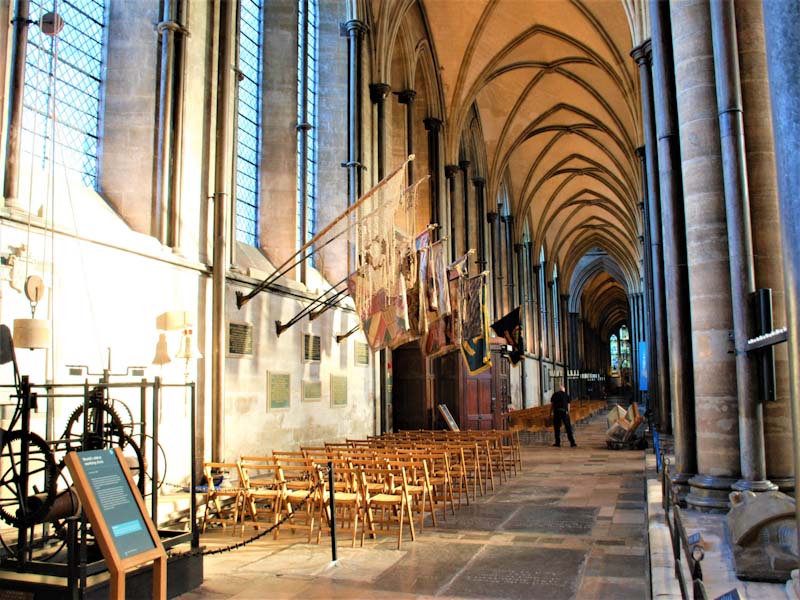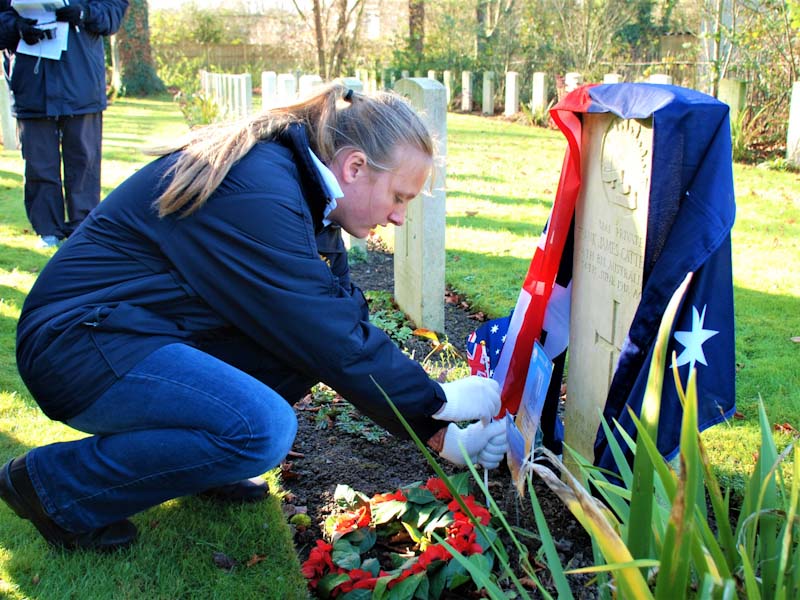December 1
Day 5 Salisbury, Codford, Sutton Veny.
First stop this morning was Salisbury, and in particular, the cathedral there. This particular cathedral was built in the 13th century, replacing one not far away known as Old Sarum. Old Sarum was originally an Iron Age settlement from the 1st Century BC, and in the 11th century, Normans built a castle and cathedral in the middle. A few centuries later the local bishop had an argument with the local aristocrat and so decided to move his cathedral down the road a bit. If you have read “Pillars of the Earth” you may be familiar with the story. We were given a tour by a volunteer guide who gave us the background on the cathedral and some of its gems, including what maybe one of the oldest working clocks in existence. We then went and saw one of the 4 surviving copies of the Magna Carta, signed in 1215 by King John to keep his barons happy. While many of the agreements made had little effect on the lives of common people at the time, some clauses of this document laid the foundations for our own form of democracy, and so this is a very significant document in our history. During the 2nd World War, to keep it safe from bombings, one of the ladies who worked at the cathedral rolled it up every night and took it home on her bicycle and brought it back to the cathedral each morning.
From Salisbury we made our way to Codford. This is another village name that is often mentioned in the service records and personal writings of Australian soldiers who sent time here training, recuperating, or waiting to go home. There are a number of them buried in a small Commonwealth War Graves Commission Cemetery near the local church, including Frank Cattermole from Bordertown, who was commemorated by Kira. His life in the army was different from many as he spent the first year training in Australia before making his way to England, only to get sick while training there, dying from pneumonia before even travelling to France.
There was a pheasant shoot going on not far from the village, and so Kira’s commemoration was punctuated by the sound of shot guns going off at regular intervals. Perhaps it added to the ambience of the moment.
From here we travelled to Sutton Veny. This little village has a special part to play in the Connecting Spirits story. One of the teachers there is a friend of Julie’s and since 2010 we have visited the school. It has roughly 140 students from R – 6 and each class is named after a town or city in Australia or New Zealand in memory of the 143 Anzacs buried in the churchyard next to the school. Every Anzac Day, the students make little bunches of flowers and then take them to the cemetery where each child stands at the grave of each Anzac and leaves a bunch of flowers in memory of the sacrifice made 100 years ago. This has happened every year since 1918, when some of the local lads pinched flowers from local gardens and laid them on the graves present then.
We first went to the churchyard where Julie commemorated Alfred Atkins, who was originally born in Geelong but was living in Grunthal, now known as Verdun in South Australia, when he enlisted. His attestation papers say that he was 45 on enlistment but his birth records suggest he was 58, well above the maximum age allowed. Although he left Australia in March 1916 there is no record of him spending time at the front. He was in training camps for that year and spent some time in hospital in early 1917 before going AWOL in May. He was found in November and was to be returned to his unit, but committed suicide at Larkhill before he could be transported there.
Tamika also commemorated her great great uncle, Hugh Kelly Clarke, here. Hugh had lost one brother and another was seriously injured, but Hugh did not get to France in time to see any action himself. He caught the flu in France in early 1919 waiting to be sent back to Australia. He was sent to Sutton Veny to recover and spent the rest of the year there in hospital or doing administration work before leaving in December to return to Australia.
After our commemorations we went to the school to look around and to join the students at their end of week celebration assembly. We then returned to Codford for a look at a Xmas shop there before returning to our hotel.



